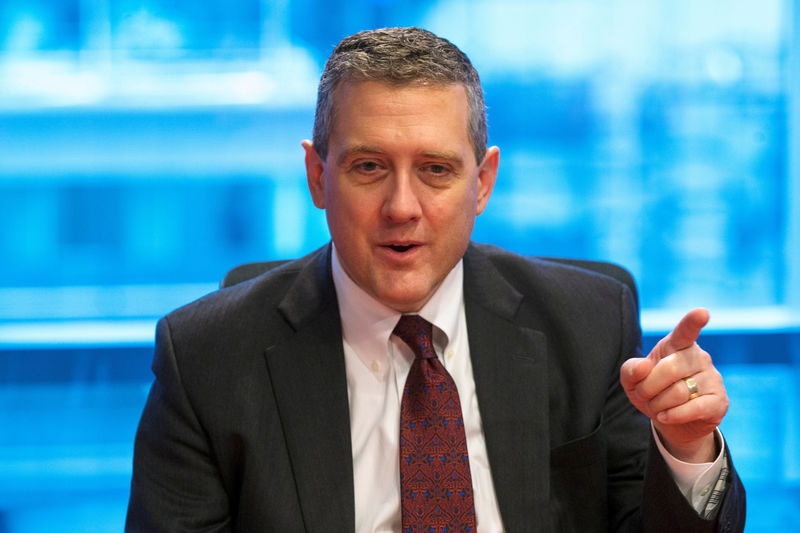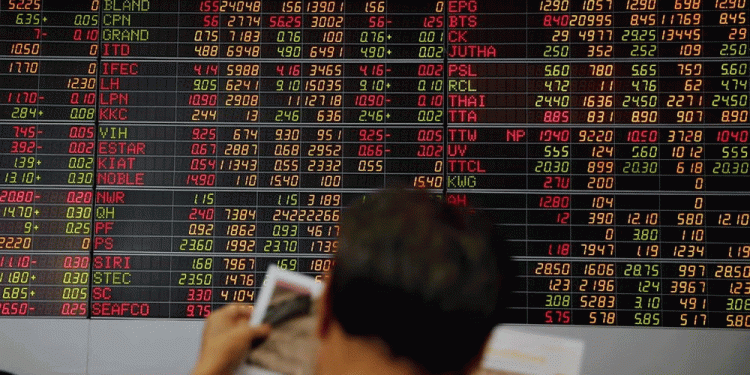 © Reuters. FILE PHOTO: St. Louis Fed President James Bullard speaks about the U.S. economy during an interview in New York
© Reuters. FILE PHOTO: St. Louis Fed President James Bullard speaks about the U.S. economy during an interview in New YorkLITTLE ROCK, Ark. (Reuters) – St. Louis Fed President James Bullard warned on Friday of a key “bearish signal” emerging for the economy if the Fed continues raising interest rates as fast as policymakers currently intend, and called on his colleagues to move more cautiously in the drive to more normal monetary policy.
Bullard said that as it stands, within a year short-term interest rates, pushed higher by Fed action, may move above long-term interest rates — an “inversion” of the yield curve that is classically taken as a signal of economic weakness.
It is unlikely that long-term rates will move higher on their own to keep pace with the Fed’s moves on short-term rates, he said, which he felt should make the Fed slow down.
“The simplest way to avoid yield curve inversion in the near term is for policymakers to be cautious in raising the policy rate,” Bullard said in a presentation to the Arkansas Economic Development Institute.
With the spread between one-year and 10-year Treasury bonds currently around 0.73, and the latest Fed forecasts showing three rate increases next year, the yield curve could invert during 2018.
“There is a material risk…if the (Federal Open Market Committee) continues on its present course,” Bullard said. Inversion “is a naturally bearish signal…This deserves market and policymaker attention.”
Fed officials are expected to raise rates at their upcoming December meeting, and update their outlook for 2018. Weak inflation has led to division among policymakers over whether they should slow the pace of rate hikes until it is clear that prices are going to recover.
Expected inflation is a key component of long-term bond prices since investors would want securities to hold value on an inflation-adjusted or “real” basis over time. That inflation weakness is another reason the yield curve may flip from its normal slope, which rewards investors with higher interest rates on longer-term securities.
The yield curve is “not infallible” as a predictor of the economy, Bullard said, and some researchers have argued that it is losing its usefulness as an economic signal given the global decline in interest rates.
But Bullard said policymakers and investors “need to take the possibility of a yield curve inversion seriously.”
Fusion Media or anyone involved with Fusion Media will not accept any liability for loss or damage as a result of reliance on the information including data, quotes, charts and buy/sell signals contained within this website. Please be fully informed regarding the risks and costs associated with trading the financial markets, it is one of the riskiest investment forms possible.
Source: Investing.com




























